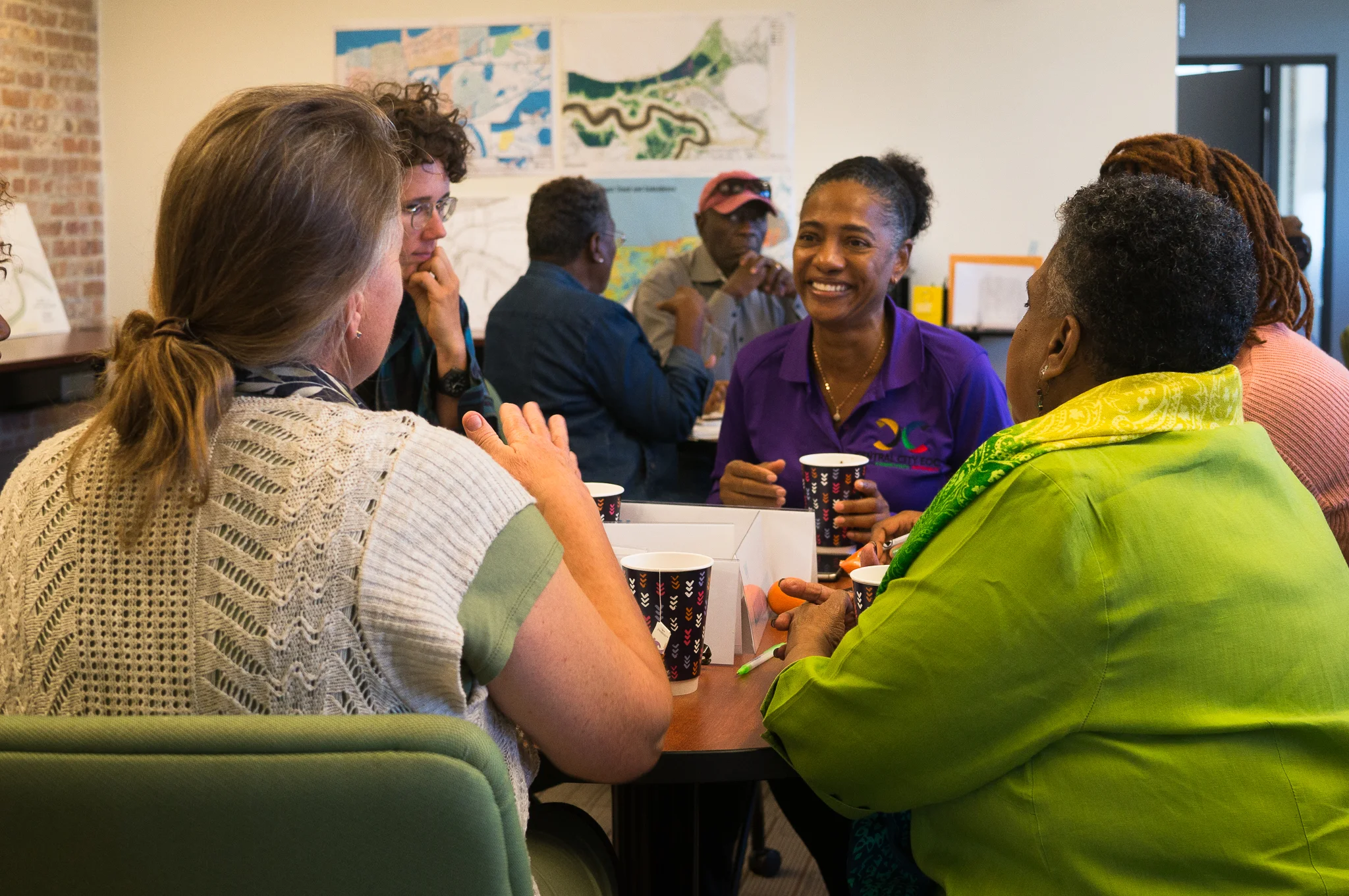Planning and Action
Climate adaptation and resilience affects everyone and must involve everyone
Resilience planning, water infrastructure design, and climate adaptation have existed within the purview of planners and engineers as a matter of technical expertise rather than the product of civic discourse. Citizens must play active, leading roles in developing the plans and policies that drive climate adaptation and resilience projects.
While there are nonprofits, public agencies, and institutions conducting outreach in regards to water management and climate adaptation, few provide a role for the citizen in bringing their knowledge of the city, their lived experiences of disasters and recovery, and their diverse perspectives and social networks into the work of resilience planning, at the level of policy, budgets, project designs, and governance.
Paintings on the changing relationship between humans, land, and water in New Orleans. The painter, Anne Nelson, was a 2018 Water Leaders Institute participant.
Through co-creation, community members, resilience planners, and city leaders can join together in crafting shared narratives of resilience and adaptation.
We believe that citizens must become co-authors of our resilience and adaptation plans -- their implementation and efficacy depends on broad buy-in and a shared sense of ownership. Further, it is imperative that we align planning and design objectives across sectors and issue areas.
Co-creation is an alternative to conventional forms of community engagement and authorship. Community members working on rain gardens in their yards should also have a seat at the table alongside resilience planners and policy makers. Together, we can define what “resilience” and “living with water” mean for our city, what goals to set for resilience efforts, and how climate adaptation plans will be implemented.




